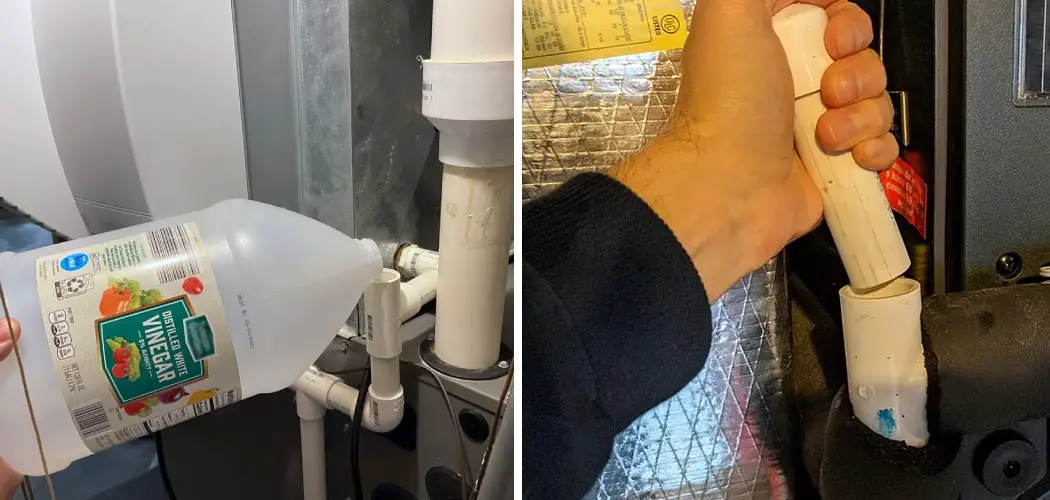For many people, cleaning the AC drain lines can feel like an intimidating task. But with a bit of understanding, it’s actually quite simple to do. In this blog post, we’ll provide all the information you need to know on how to clean AC drain lines safely and efficiently – from choosing the right products and equipment to executing the actual steps necessary for thorough maintenance.
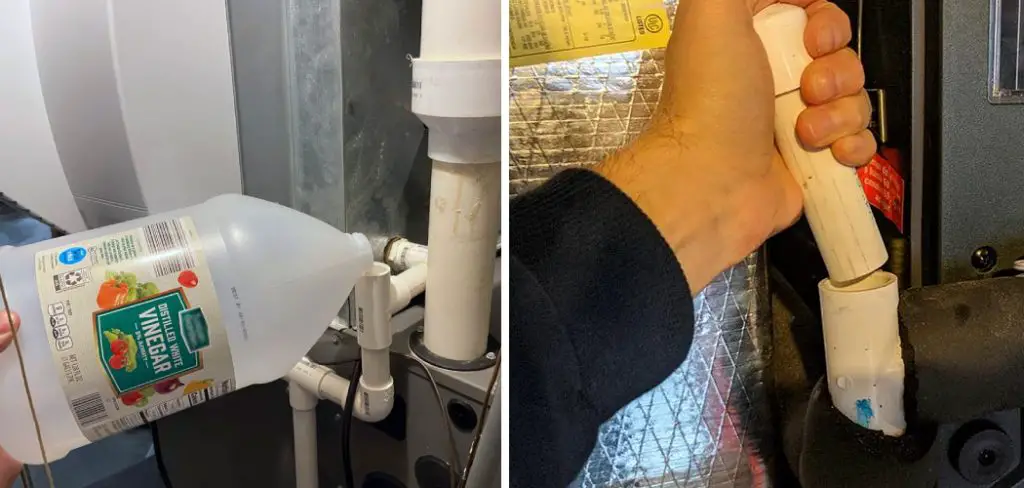
You’ll soon be ready to tackle everything from mildew buildup and algae formation in your drainage system, to clogged drains or recurring leak issues – all without having to call in a professional service. So read on for our handy guide on how best to clean those essential air conditioning drain lines!
Tools and Materials You Will Need to Clean AC Drain Lines
- Air compressor or vacuum cleaner
- Garden hose
- Water-soluble cleaning solution (such as vinegar)
- Plastic bucket
- Wet/dry vac, power washer, or pressure washer
- Shop towels
- Old toothbrush and scrub brush
- Cleaning rags
- Rubber gloves
Step-by-Step Guidelines on How to Clean AC Drain Lines
Step 1: Begin by Turning Off the Power
Before attempting to clean the AC drain lines, always make sure that the power is turned off. This will prevent any shock hazards and also protect you from potential injury. If you are unsure about the power supply, be sure to turn it off at the circuit breaker. But surely check the outside unit before proceeding.
Step 2: Disconnect the Drain Line from the AC Unit
Once you have turned off the power, locate and disconnect the drain line from the main AC unit. This is usually located at the bottom of a condensing fan motor or on top of a floating pan. Make sure to use a pipe wrench or pliers to properly disconnect the drain line. Before disconnecting the line, be sure to place a bucket underneath it in order to catch any spilling liquid.
Step 3: Add a Cleaning Solution to The Drain Line
Once the line is disconnected from the AC unit, it is time to add your cleaning solution. Use either a water-soluble cleaner or a mixture of vinegar and hot water if you are dealing with a clogged drain line. If the cleaning solution is too acidic, you can add baking soda to neutralize it. This will help clear the drain line of any dirt, debris, or bacteria.
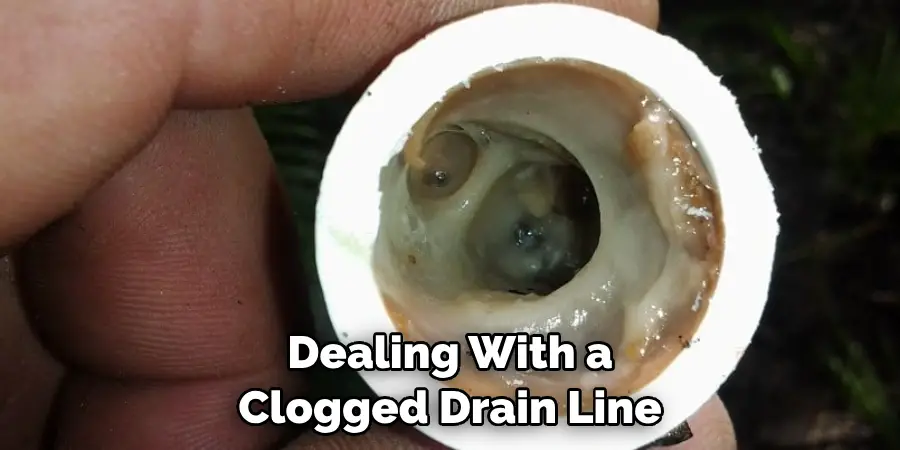
Step 4: Use a Wet/Dry Vacuum or Pressure Washer
Once you have added your cleaning solution to the drain line, it is time to use either a wet/dry vacuum or a pressure washer to remove any dirt and debris from the pipe. Make sure that you are using the right combination of pressure and suction power for your particular situation. This will help to ensure that all of the dirt and debris is properly removed.
Step 5: Rinse with Water
Once you have finished using the vacuum or pressure washer, it is time to rinse the line with water. Use a garden hose at low pressure in order to avoid damaging the inside of the pipe. This will help to ensure that all of the cleaning solution and dirt have been removed from the drain line. Carefully inspect the line for any signs of damage.
Step 6: Clean Up and Reattach the Drain Line
Once you have finished cleaning up, it is time to reattach the drain line to the AC unit. Make sure that all connections are secure and tight before reinstalling it. Then, wipe down the outside of the drain pipe with shop towels and use an old toothbrush and scrub brush to remove any remaining dirt or debris.
Make sure to wear rubber gloves for this step. Finally, inspect the line one last time for any cracks or leaks. If everything looks good, you can turn the power back on and start using your AC unit again!
Congratulations – now that you know how to clean AC drain lines yourself, you’ll be able to keep your air conditioning system running smoothly and efficiently all year round! Just remember to follow the steps above carefully and to use appropriate safety measures when working with electricity. Good luck!
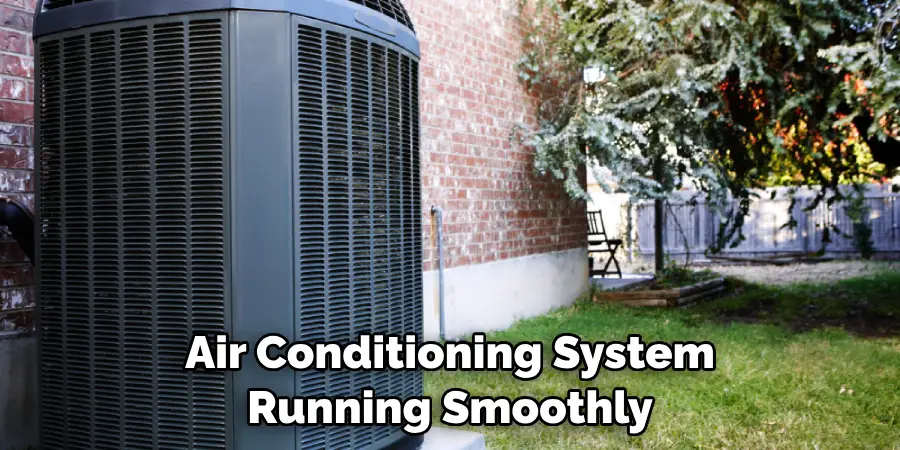
Additional Tips and Tricks to Clean AC Drain Lines
- Flush the drain with a solution of water and bleach to help clear any blockages or debris that may be clogging the line.
- Use a wet/dry vacuum to suck up any remaining obstructions from the line.
- Disconnecting your AC unit from power before cleaning is always recommended for safety precautions.
- Use a brush and vinegar to scrub any stubborn build-ups that may be present in the line.
- If you have access, use a snake auger tool to try and break up any clogs that are further down the line.
- After cleaning, inspect the line for signs of damage or wear and tear. This will let you know if any further maintenance is required before using the line again.
- If necessary, replace any parts that may be heavily corroded or worn due to age and use.
- Reconnect your AC unit back to its power source and test the drain lines to ensure they are flowing freely once more.
Following these tips and tricks will help ensure your AC drain lines are clean, clear, and free of blockages. Doing so will also reduce the risk of further damage or wear that could potentially be caused by clogs or debris in the line. Keeping your AC unit maintained properly is essential for ensuring optimal performance during the hottest days of summer.
Safety Precautions Need to Follow for Cleaning AC Drain Lines
- Always wear protective gear when cleaning the AC drain lines such as gloves, goggles, and dust masks.
- Make sure to turn off the power source before beginning to clean the AC drain lines to avoid electric shocks or any other injuries.
- Don’t use any sharp objects or tools that could potentially damage the AC drain lines while cleaning.
- If you are going to use a ladder or any other elevated platform, make sure it is properly secured and stable before climbing on it.
- If possible, have someone assist you with the cleaning process as an extra precautionary measure.
- Dispose of all the cleaning materials and debris properly in a designated area.
- The last and most important safety precaution is to never allow children near the area while you are cleaning the AC drain lines. Keep them away from cleaning materials and debris, as they could potentially be injured by them.
By following these simple safety precautions when cleaning your AC drain lines, you can ensure that both yourself and your family stay safe and injury-free.
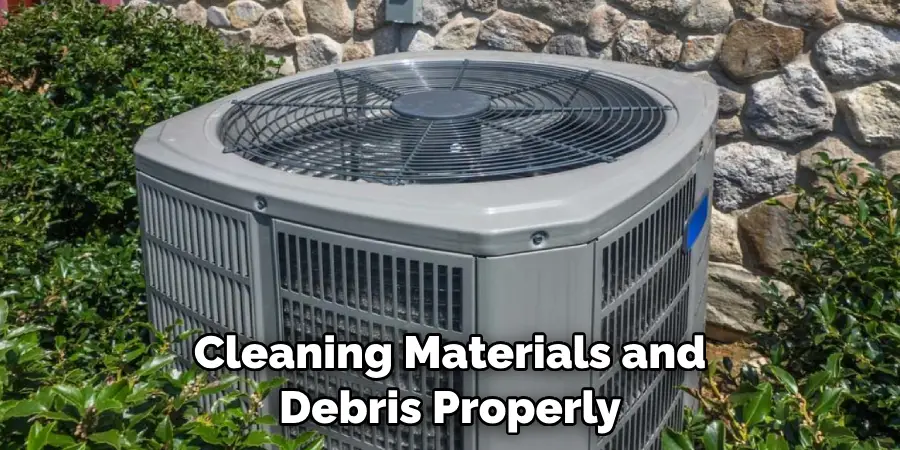
Frequently Asked Questions
How Often Should I Clean My AC Drain Lines?
Depending on the environment, it is recommended that you clean your AC drain lines at least once a year. If you live in an area with excess moisture or other environmental factors that may cause buildup inside the drain line, more frequent maintenance may be necessary.
What Kind of Cleaner Should I Use on the Drain Line?
It is important to use a cleaner that is designed specifically for AC drain lines in order to avoid damaging the system. A mild detergent or vinegar mixed with warm water will do an effective job of loosening and removing any debris inside the line. If you choose to purchase a commercial product, make sure to select one that is designed for AC drain lines and follow the instructions carefully.
What Are Some Signs That My Drain Line Needs Cleaning?
If you notice any strange smells coming from your air conditioner, it may be a sign that debris has built up inside the drain line. Additionally, if there is water pooling around your outside unit, this could be an indication that something is blocking the line. Cleaning the drain line promptly can help prevent further damage to your system.
What Are the Benefits of Cleaning My Drain Line?
Keeping your AC drain lines free of debris and buildup can help improve the efficiency of your system. Furthermore, it can reduce energy costs and prolong the life of the unit. Regular maintenance also helps you avoid costly repairs in the future.
What Should I Do If the Drain Line Is Not Clearing?
If you are having difficulty clearing out your AC drain line, it is best to call a professional. A technician can identify the underlying issue and come up with an effective solution to ensure that your system runs efficiently and safely.
Do I Need to Call a Professional for Drain Line Cleaning?
If you are confident in your DIY skills and have all of the necessary supplies, cleaning the AC drain lines yourself is usually sufficient. However, it may be beneficial to schedule a professional service if you have never done this before or are unsure about how to proceed. A qualified technician will be able to ensure that the job is done correctly and safely.
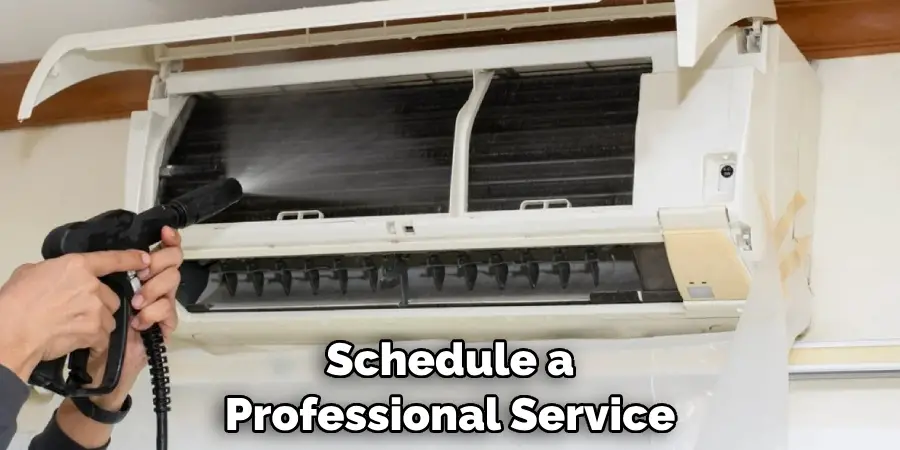
Conclusion
In closing, remember that cleaning ac drain lines don’t have to be difficult if you know what steps to take ahead of time. You can do this job yourself or hire someone with the equipment and know-how to clean ac drain lines safely.
Whatever option you choose, ensure that it’s a fast and efficient process so that your home or business stays comfortable all year round. Don’t forget to also keep an eye on your air filter, as a clogged filter can lead to drainage issues too.
Now that you have all the information you need, why not get started today? A little bit of maintenance goes a long way – so go ahead and kick-start your AC maintenance now!

